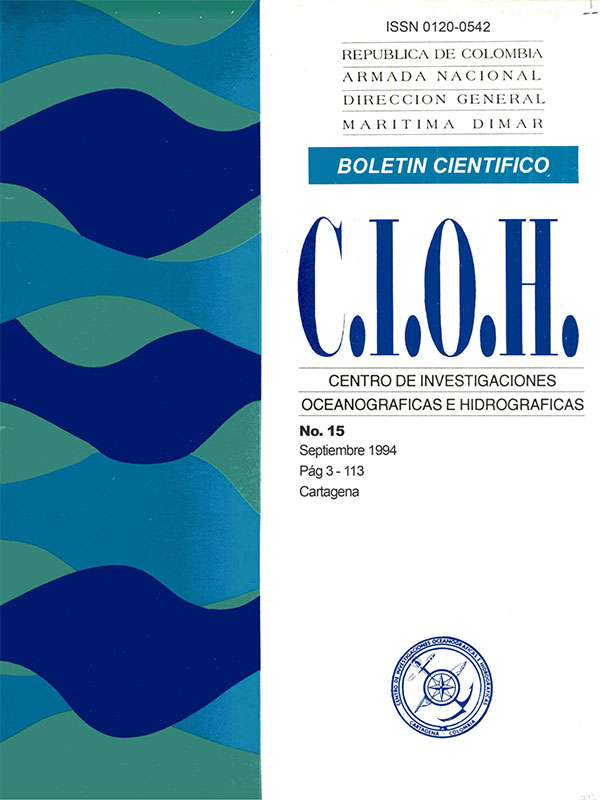Inventario sobre capacidades portuarias para recepción y manejo de residuos contaminantes provenientes de buques - Fase II (Barranquilla y Santa Marta)
DOI:
https://doi.org/10.26640/22159045.73Keywords:
Colombia, Cartagena de Indias, Barranquilla, Santa Marta, MARPOL, Pollution from Ships, Decreto 2324/84Abstract
The present work was done accordingly with the need of the Colombian Government to regulate the 1973 International Convention on the Prevention and Control of Pollution from Ships and its 1978 Protocol, "MARPOL 73/ 78", aproved by the country trough the law 12 of 1981. In addition, the Dirección General Marítima (DIMAR), the Colombian maritime authority, is responsible for the application of "MARPOL 73/78", and other international conventions as stablished by the decreto 2324 of 1984.
During 1992, phase I was accomplished in the Cartagena de Indias Port (Garay, 1993), while in 1993 the phase II covered the ports of Barranquilla and Santa Marta whose results are presented in the article. These pots, constituted by 43 piers of terminals, of which, two partially have inland facilities to receive liquid or solids wastes, and other four hire collecting services.
Downloads
References
DIMAR, 1992., Manual para Prevenir la Contaminación del Mar por Hidrocarburos. Armada Nacional. Bogotá. 240p.
IMO, 1989., The Journal of the International Maritime Organizaban. Reprinted from IMO News No. 3.
SEA GRANT COLLEGE PROGRAM, 1981., Primer Simposio Internacional sobre Contaminación Marina. Taller sobre Desperdicios Marinos. Universidad de Puerto Rico.
VERGARA, I., 1988., "Manual para la Aplicación del Convenio MARPOL 73/78". Convenio Internacional para Prevenir la Contaminación para Buques. 1973/1978. 2a. Edición Santiago, Chile, 1988. 241p.
Downloads
Published
Issue
Section
License
Attribution — You must give appropriate credit, provide a link to the license, and indicate if changes were made. You may do so in any reasonable manner, but not in any way that suggests the licensor endorses you or your use.
NonCommercial — You may not use the material for commercial purposes.
NoDerivatives — If you remix, transform, or build upon the material, you may not distribute the modified material.
No additional restrictions — You may not apply legal terms or technological measures that legally restrict others from doing anything the license permits.



